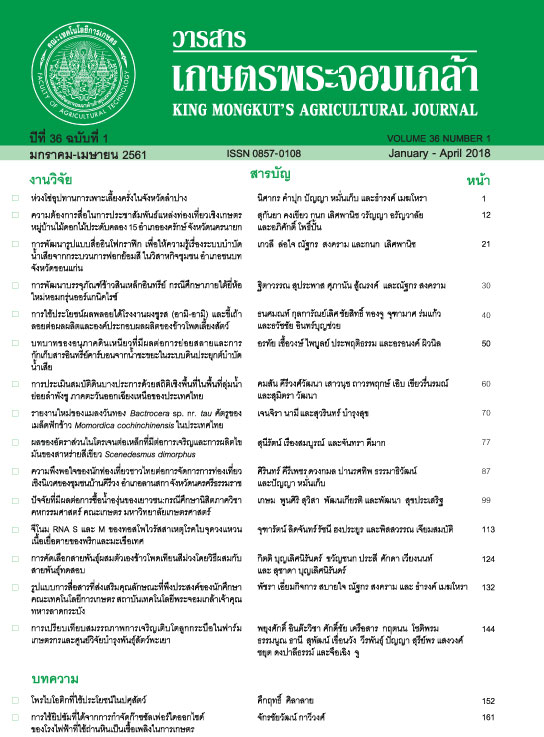การเปรียบเทียบจีโนมและอาร์เอ็นเอรีคอมบิเนชันของทอสโพไวรัสชนิด Tomato necrotic ringspot virus สาเหตุโรคใบจุดวงแหวนเนื้อเยื่อตายของพริก
Main Article Content
บทคัดย่อ
Pepper production in Thailand has been drastically affected by virus disease caused by Tomato
necrotic ringspot virus (TNRV). The typical symptom of necrotic or yellow ringspot appeared on pepper
and tomato fruits that caused unmarketable produces. The virus has been characterized based on
genomic sequencing and various strains were identified. In this study, four of TNRV isolates (TT1, T91,
C94 and CT1) from tomato and chili pepper were analyzed for the occurrence of genetic variations using
three different analysis programs. Full length sequences of RNA M and RNA S indicated 94.7-98.2%
identity among TNRV isolates but shared only 58.2-76.7% similarity to other tospoviruses. Therefore TNRV
should be considered as a new species. Amino acid contents of protein N were the most conserved
coding region while those of NSs protein were the most variable. There was no evidence of genome
reassortment for all tested TNRV isolates. The phylogenetic network appeared among TNRV isolates.
Analysis by using Recombination Detection Program (RDP4) revealed no possible recombination events
for RNA S while the recombination event was found on RNA M of TNRV-TT1 between nucleotides positions
1146-1759 of the intergenic region suggesting that TNRV-C91 and C94 were major and minor parents,
respectively. This result suggested that RNA recombination was the potential origin of genetic variation
among the studied TNRV isolates in the natural fields.
Article Details
วารสารเกษตรพระจอมเกล้า


